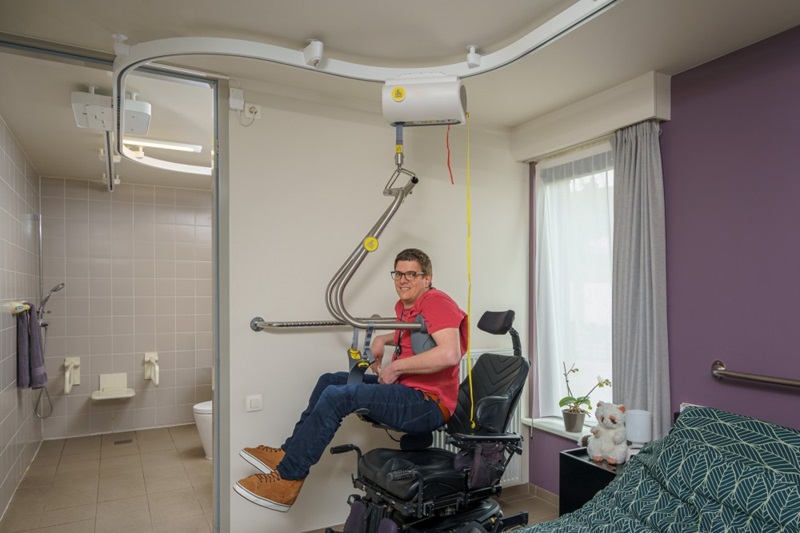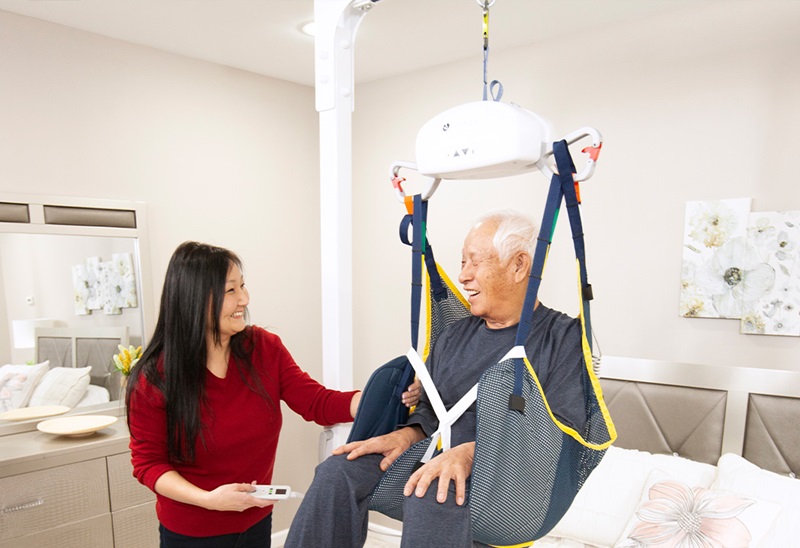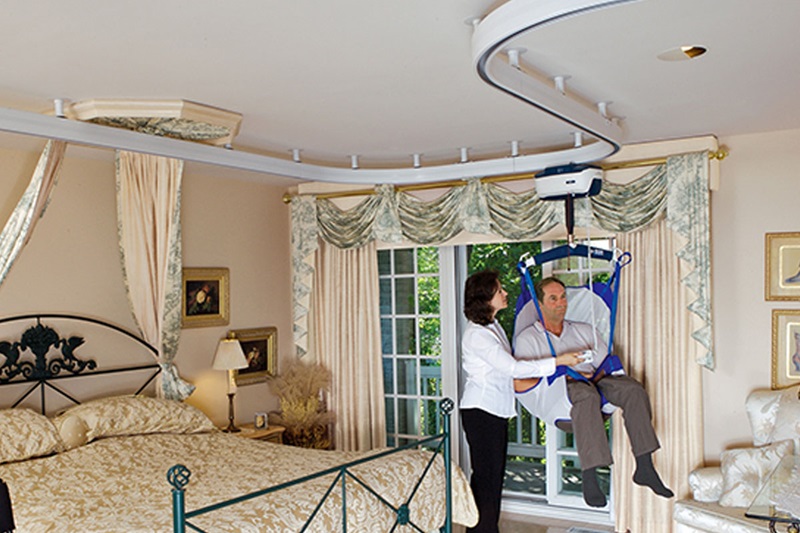Taking care of a loved one with limited mobility can be physically demanding and challenging. However, with the advancement of technology and equipment, we’ve come a long way in providing better care for our loved ones. One such piece of equipment that has revolutionised caregiving is the ceiling hoist, which has made patient transfer safer, easier and more comfortable for both the patient and the caregiver.
What Is the Purpose of a Ceiling Hoist?

When you take a closer look at a resilient and easy-to-use ceiling lift for home care, several things become apparent. This seemingly simple piece of equipment serves three main purposes, all of which are crucial for the safety and comfort of patients:
Safe Patient Transfer
The primary purpose of this piece of equipment is to facilitate safe patient transfer from one location to another. This can be within the house, from a bed to a wheelchair or even during transportation. Ceiling hoists are designed to bear weight and provide support, ensuring that patients are transferred without any risk of falls or injuries.
It’s not uncommon for accidents to occur during manual transfers, which can cause additional health issues for patients and lead to physical strain on caregivers. This can range from mild discomfort to serious injuries, especially for caregivers who may not have the strength or training to handle manual transfers. Ceiling hoists eliminate this risk by providing a reliable and safe transfer solution.
Reduced Physical Strain on Caregivers
Caring for a loved one with limited mobility can be physically demanding, and caregivers often experience strain in their arms, back, and neck, among other areas. This can lead to chronic pain, muscle strain and even musculoskeletal disorders for caregivers.
A ceiling hoist reduces the physical strain on caregivers by taking on the weight of the patient during transfers. This not only promotes caregiver safety but also allows them to provide care without worrying about their physical well-being. It also enables guardians to continue providing care for longer periods without experiencing fatigue or injuries.
Improved Patient Comfort and Independence
Manual transfers can be uncomfortable for patients, especially if they have limited mobility. It may require multiple caregivers to lift the patient, which can be invasive and embarrassing for the patient. These pieces of equipment allow for a single caregiver to safely transfer the patient with ease and minimal invasion, promoting their comfort and dignity.
When you install a ceiling lift, patients can also experience increased independence. With the help of a caregiver, they can quickly and safely move from one location to another without assistance from others. This not only gives them a sense of autonomy but also promotes mental and emotional well-being.
How Do You Install a Ceiling Hoist?

While each manufacturer may have specific instructions for installation, the general process involves several steps to ensure a safe and functional system. It’s crucial that you follow these steps carefully and consult with a professional if needed.
Assess the Area
Before installing a ceiling hoist, you need to assess the area to ensure that it’s suitable for installation. This includes checking the ceiling structure, clearance height, and any potential obstructions. If you notice any issues, it’s best to address them before proceeding with installation. This can eliminate any potential safety hazards and ensure that the system functions correctly.
Install the Ceiling Track
The ceiling track is the backbone of a hoist system, and it’s crucial that it’s installed correctly. This involves measuring and drilling holes in the appropriate locations, securing the track to the ceiling and ensuring its level. It’s critical to use appropriate tools, materials and techniques for installation to ensure the safety and stability of the system. When the entire track is installed, you also need to secure it with brackets and supports.
Mount the Hoist Motor

Next, you need to mount the hoist motor onto the ceiling track. This involves attaching it to a trolley that runs along the track and connecting it to a power source. You must ensure that all connections are secure and in good working condition before proceeding. You can do this by testing the hoist motor and making any necessary adjustments, such as adding counterweights for proper balance.
Attach the Sling or Harness
Once the hoist motor is securely mounted, you can attach a sling or harness to it. The type of sling or harness used will depend on the patient’s size and mobility needs, such as full-body slings for those with limited mobility or transfer belts for those who need minimal assistance. It’s crucial to select the appropriate type and size of sling or harness and ensure that it’s attached securely to the hoist motor.
Test the System
After completing all the steps, it’s crucial to test the system to ensure that it functions correctly. This involves testing different movements and weight capacities with a willing volunteer or dummy weight before using it with a patient. It’s also vital to regularly inspect and maintain the system to ensure its continued reliability and safety, which may involve replacing slings or parts as needed.